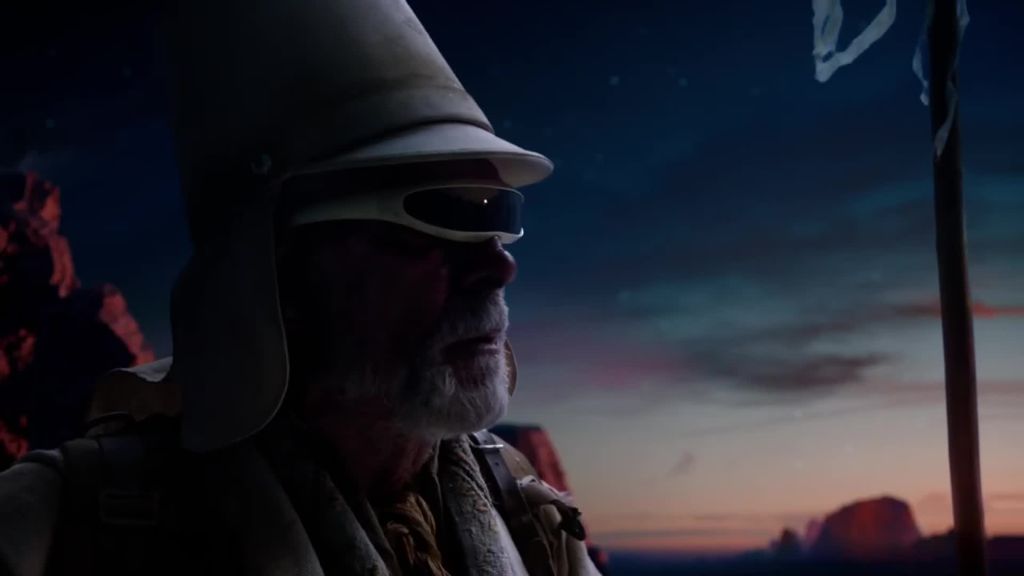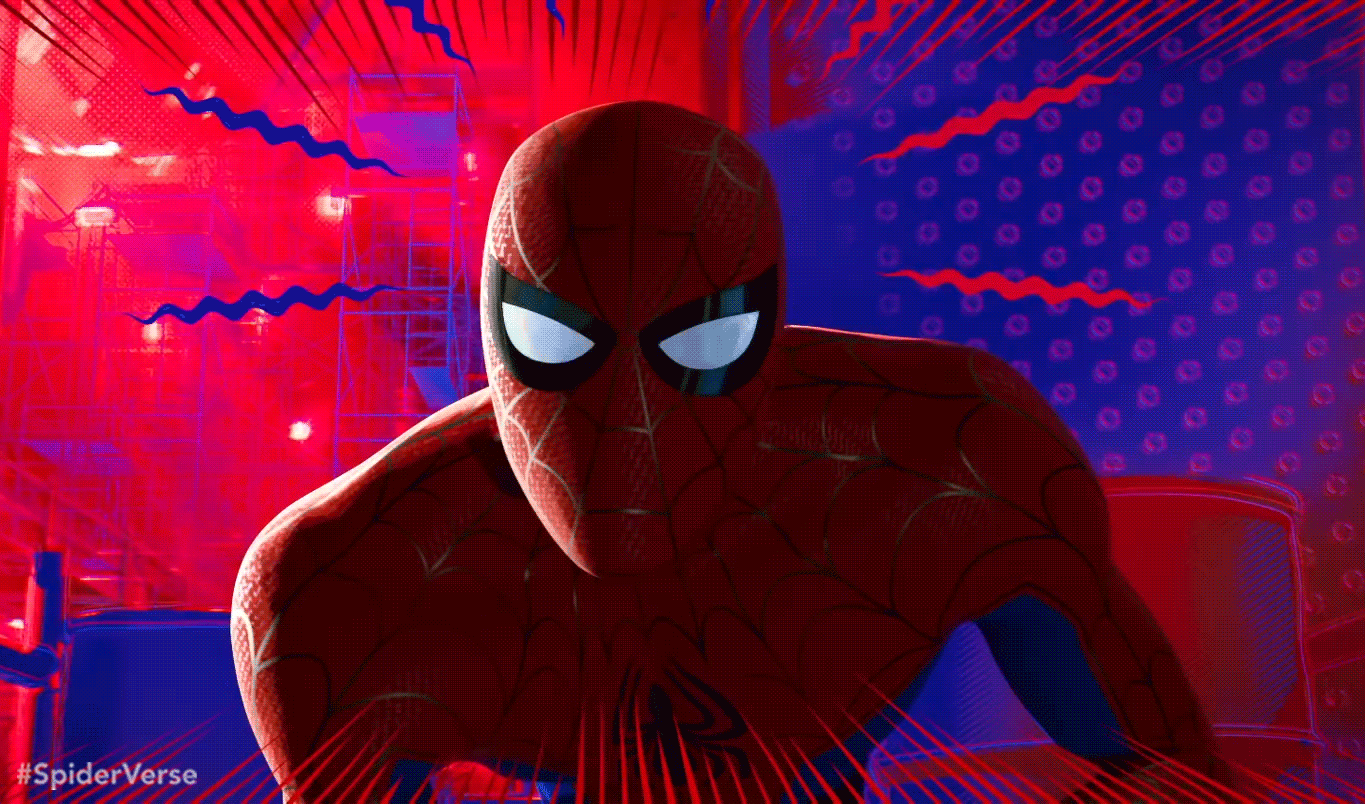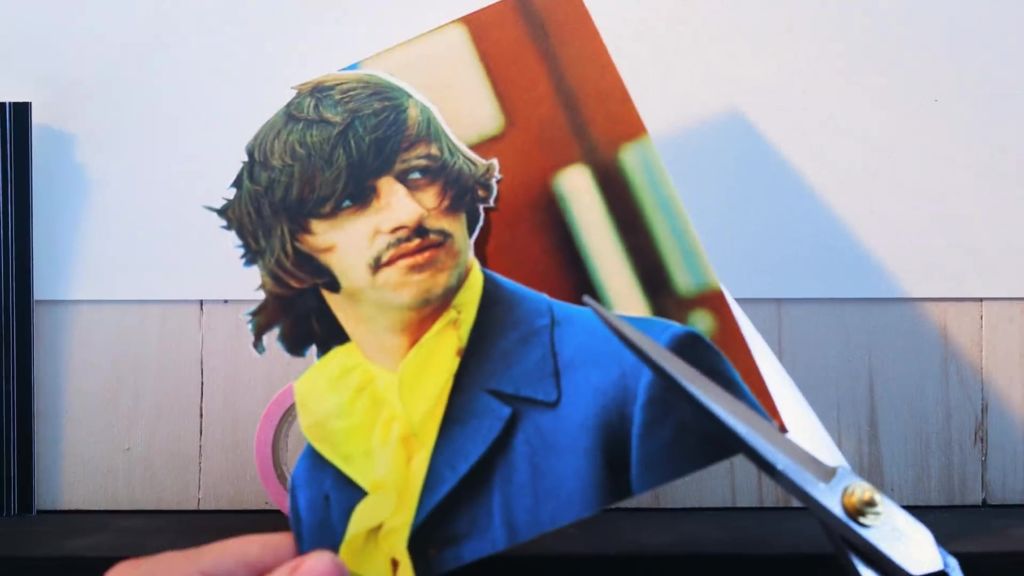The art of the cel
From candlelit cave paintings to spectacular Spider-verses, mankind's been making moving drawings for millennia and, as far back as the late 1800s, adland has been harnessing its magical powers. Carol Cooper chats to industry magicians about the state of the animation nation today.
Batteries. Not much to say about them really. Triple As are smaller than double As and if you leave them in a torch too long they ooze a crusty liquid; some kind of alien life essence perhaps? Doubtful.
They’re just not that interesting.
Yet stand a couple upright, apply a virtual hinge, sound effects and a story and suddenly you have a character. A two-leg walking thing, with no face or body but a personality.
Credits
powered by
-
-
- Director Michael Marczewski
-
-
Unlock full credits and more with a Source + shots membership.
Credits
powered by
- Director Michael Marczewski
- Sound Design Father
- Art Director Connor Campbell
- Project Manager Josephine New

Credits
powered by
- Director Michael Marczewski
- Sound Design Father
- Art Director Connor Campbell
- Project Manager Josephine New
This one in particular, by Blinkink’s Michael Marczewski for It’s Nice That and Adobe, is a fine example of the animator’s magical powers – the ability to bring the inanimate to life.
“The possibilities are endless in animation,” says Blinkink’s executive producer Bart Yates, “Creating a character without a face can be hugely satisfying – the Pixar Lamp comes to mind.”
The Pixar lamp first came to light in 1986, with Luxo Jr, the first short film produced by Pixar Animation. It gave the studio its icon and was groundbreaking at the time for its photorealism, which greatly enhanced the emotional realism of the characters – to the point where you forget they’re lamps.
It’s such sorcery that has become so beloved by marketers, but it’s far from new. Though film animation is usually thought to have begun in the early 1900, in 1899 a certain Arthur Melbourne Cooper produced the first stop-motion film, and it was an ad! Matches: An Appeal was a campaign for Bryant & May that featured a matchstick character writing on a blackboard, entreating viewers to fund free matches for British soldiers in the Boer War.
Going even further back, like 20,000 years, homo sapiens were possibly attempting animation when they daubed bison and horses on the walls of the Lascaux caves in France. Set out in series of frames, comic-book style, it’s now thought the beasts were given the illusion of movement by flickering light from grease lamps.

Above: The Lascaux caves in France
The desire to animate objects and other critters around us seems an almost innate human need. Animation appeals on an elemental, childlike level, which is why it’s a powerful tool in advertising. It takes us back to a time when we were all animators, creating fantasy scenarios for teddies, dolls, and other toys. Most of us have grown up in the company of animated puppets – from The Clangers knitted critters in the late 60s, to today’s talking pink pigs or masked mini superheroes in pyjamas.
When advertisers started to use animation, some saw the association with kids’ cartoons as a negative. Alan Smith of the Nexus super duo Smith & Foulkes says, “there is still the attitude in some quarters that animation is just for kids, despite the variety and sophistication of adult-orientated animation produced over the decades.”
But an association with the sunny uplands of childhood can be a neat way to sneak in darker messages. How could an ad depict a range of gruesome deaths – from decapitation, to immolation, to being eaten by a bear – in a jolly, comical way without the medium of 2D animation.
Credits
powered by
- Agency McCann/Melbourne
-
- Director Julian Frost
-
-
Unlock full credits and more with a Source + shots membership.
Credits
powered by
- Agency McCann/Melbourne
- Director Julian Frost
- Exec CD John Mescall
- Creative Patrick Baron
- Sr Producer Mark Bradley
- Production Company Global Mechanic
- Producer
- Music Oliver McGill
- Animator Julian Frost

Credits
powered by
- Agency McCann/Melbourne
- Director Julian Frost
- Exec CD John Mescall
- Creative Patrick Baron
- Sr Producer Mark Bradley
- Production Company Global Mechanic
- Producer
- Music Oliver McGill
- Animator Julian Frost
And Greenpeace, known for its hard-hitting campaigns, successfully softened the adult content of its message in There’s a Rang-tan in My Bedroom, which told the tale of a dispossessed orangutan in a child’s storybook style.
Animated animals became ubiquitous in ads once brands realised the power of the mascot. Kellogg’s Tony the Tiger bounced into view in 1951, Coca Cola’s polar bear was animated in 1993…
Credits
powered by
- Agency CAA (Creative Artists Agency)
- Production Company Sierra Hotel Productions
- Director Henry Anderson
-
-
Unlock full credits and more with a Source + shots membership.
Credits
powered by
- Agency CAA (Creative Artists Agency)
- Production Company Sierra Hotel Productions
- Director Henry Anderson
- CD/Art Director Shelly Hochran
- Copywriter Kenneth Stewart
- Producer Mark Sitley
- CD/Art Director Len Fink
- Co Producer CAA (Creative Artists Agency)
- Editor Rick Ross
- Animator Rhythm + Hues
- CGI Rhythm + Hues
- Music Glenn Rueger

Credits
powered by
- Agency CAA (Creative Artists Agency)
- Production Company Sierra Hotel Productions
- Director Henry Anderson
- CD/Art Director Shelly Hochran
- Copywriter Kenneth Stewart
- Producer Mark Sitley
- CD/Art Director Len Fink
- Co Producer CAA (Creative Artists Agency)
- Editor Rick Ross
- Animator Rhythm + Hues
- CGI Rhythm + Hues
- Music Glenn Rueger
And now a relative of the mongoose reigns supreme. First popping their pointy little faces over the parapet in 2009, the meerkats, created by VCCP and Passion Pictures, took adland by storm. “Compare The Meerkat is not like any other campaign,” says Passion EP Debbie Crosscup. “It still captures people’s imaginations, we get letters sent to us intended for the meerkats – people relate to the animated creatures as real living things.”
This reality-testing confusion has been greatly aided by ever expanding technology. Andy Jones, CTO of Psyop, notes “the pace of innovation has been really aggressive in the past few years.” The creative collective has been at the forefront of developing new animation tech, from launching its own ID matte creation tool, Cryptomatte, as an open-source software to using real-time rendered CG characters in a live stream broadcast for Cricket Wireless.
“The toolbox keeps getting bigger,” says Psyop’s MD Adina Sales. But just because they’re there, is it necessary to use all the tools? “Technology should always be in service of the story it’s being used to tell,” says Crosscup, a maxim echoed by others in the industry. Director Pete Candeland recalls the overexcitement in the early days of VR: “VR became a tool that was overused. People were excited about the trick of interactivity and the viewer controlling the story, but it doesn't work. Viewers want to be taken on a journey by the director, not have the responsibility of making choices.”
Nexus Studios produced an innovative piece of AR animation with HotStepper, ‘the world’s first AR character based wayfinding app’, featuring a rather bonkers and woefully underdressed AR dude.
Credits
powered by
-
- Production Company Nexus
-
-
-
Unlock full credits and more with a Source + shots membership.
Credits
powered by
- Production Company Nexus

Credits
powered by
- Production Company Nexus
Though Alan Smith agrees that VR and AR should not be used just because you can… “Once the initial amazement of what you can do with it wears off and everyone is used to seeing animated characters walking along next to them, what stories are you telling with this new technology?”
It’s as a production tool though, that VR comes to the fore: Blinkink director Alex Grigg says "When building stuff in 3D people have to use some real mental power just to navigate a 3D space through a 2D screen. VR explodes this and makes 3D workflow more intuitive.” While Smith says using VR cameras to film enables even greater creative freedom: “you can use VR cameras to film in ways you would never have previously been able. It brings some of the immediacy of live action film-making into the sometimes painfully slow process of animation.”
You just need to open up Instagram to see that people love craft. Expert cake makers get huge followings now! Human ingenuity is hugely entertaining.
He believes there is a great demand these days for animation to visually surprise “It was interesting to see the positive reaction to the recent ground-breaking Spider-Man film, which finally broke feature animation out of its tiring formulaic approach. Perhaps there has been such a saturation in visual media that it is now more important than ever to stand out.”
Smith is one of many in the industry who have also noticed audience’s rising interest in the craft of animation; for “telling stories in tactile materials like cake and needlework.” Blinkink’s Yates says: “You just need to open up Instagram to see that people love craft. Expert cake makers get huge followings now! Human ingenuity is hugely entertaining.”
He notes that some of Blinkink’s most successful projects – from John Lewis The Bear & The Hare to the BBC World Cup Tapestry – have been ones where craft is integral to the idea and where documentation of the process has extended the campaign. The latter, for example, directed by Nicos Livesey, involved the creation of frames made from 608 unique tapestries.
Credits
powered by
- Agency BBC Creative/London
- Production Company BLINKINK
- Director Nicos Livesey
-
-
Unlock full credits and more with a Source + shots membership.
Credits
powered by
- Agency BBC Creative/London
- Production Company BLINKINK
- Director Nicos Livesey
- Creative Director Tim Jones
- Creative Director James Cross
- Executive Creative Director Laurent Simon
- Grade Freefolk
- Executive Producer Bart Yates
- Producer Alex Halley
- Colourist Duncan Russell
- Creative Edward Usher
- Creative Director Aidan McClure

Credits
powered by
- Agency BBC Creative/London
- Production Company BLINKINK
- Director Nicos Livesey
- Creative Director Tim Jones
- Creative Director James Cross
- Executive Creative Director Laurent Simon
- Grade Freefolk
- Executive Producer Bart Yates
- Producer Alex Halley
- Colourist Duncan Russell
- Creative Edward Usher
- Creative Director Aidan McClure
Yates says they could have gone down the CGI ‘tapestry effect’ route but it wouldn’t have had “the same soul as doing it ‘for real’.” He admits it takes attention to detail to the limits: “By pushing the technique into [what is] sometimes bordering on the absurd, unexpected, surprising things happen. We wanted to do this the best way, not the easiest way; of course pushing the craft like we did gives the whole campaign a whole new dimension in terms of PR and shareability. People love this stuff.”
Increasingly popular “making of” videos for craft-heavy films are often as engaging as the work itself – such as Ridley Scott revealing the magic behind his jaw-droppingly beautiful, The Seven Worlds for Hennessy.
Credits
powered by
- Agency DDB/Paris
- Production Company RSA Films
- Director Ridley Scott
-
-
Unlock full credits and more with a Source + shots membership.
Credits
powered by
- Agency DDB/Paris
- Production Company RSA Films
- Director Ridley Scott
- Creative Director Pierre Mathonat
- Creative Director Alexis Benbehe
- Executive Creative Director Alexander Kalchev
- Producer Quentin Moenne Loccoz
- Production Co. Soixante Quinze
- Post Production MPC/Paris
- Post Production MPC/Paris
- Music The
- Sound Design Grand Central Recording Studios
- Executive Producer Debbie Garvey
- Producer Annabelle Fournier
- Producer Lida Ordnungova
- Production Designer Marc Homes
- DP Dariusz Wolski
- Editor Jim Weedon | (Editor)
- Colourist Stephen Nakamura
- Creative Director Ryan Jefferson Hays
- Post Producer Tomek Zietkiewicz
- 3D Supervisor Boyo Frederix
- Head of VFX Selcuk Ergen
- Head of CG Carsten Keller
- 2D Supervisor Rod Norman
- Composer Daniel Pemberton
- Music Jerome Alquier
- Sound Designer Oliver Tarney
- Sound Designer Raja Sehgal

Credits
powered by
- Agency DDB/Paris
- Production Company RSA Films
- Director Ridley Scott
- Creative Director Pierre Mathonat
- Creative Director Alexis Benbehe
- Executive Creative Director Alexander Kalchev
- Producer Quentin Moenne Loccoz
- Production Co. Soixante Quinze
- Post Production MPC/Paris
- Post Production MPC/Paris
- Music The
- Sound Design Grand Central Recording Studios
- Executive Producer Debbie Garvey
- Producer Annabelle Fournier
- Producer Lida Ordnungova
- Production Designer Marc Homes
- DP Dariusz Wolski
- Editor Jim Weedon | (Editor)
- Colourist Stephen Nakamura
- Creative Director Ryan Jefferson Hays
- Post Producer Tomek Zietkiewicz
- 3D Supervisor Boyo Frederix
- Head of VFX Selcuk Ergen
- Head of CG Carsten Keller
- 2D Supervisor Rod Norman
- Composer Daniel Pemberton
- Music Jerome Alquier
- Sound Designer Oliver Tarney
- Sound Designer Raja Sehgal
The actual spot is a four-minute slice of VFX-heavy wonderment that took five months to create. Post producers MPC London were involved in the conception right from the start. Head of CG, Carsten Keller explains how it was “mainly executed and driven like a movie rather than an ad. On day one we realised it made sense to develop most of the full CG sequences at MPC. This was mainly because a lot of the magic happens in the movement – for example the Wood Crunches creature or the AI powder sequence in the Spicy Edge world. The narrative in these sequences was driven heavily by VFX so the idea of presenting motion concepts to Ridley on a daily basis proved to be very successful in finding the right behavior of the characters.”
Budgets are certainly smaller, and my theory is that marketing spends have stayed the same, but spread across more content.
Of course such movie-style productions mean movie-style costs, and whereas in the early days animation presented a budget marketing option, this is not so much the case. “Animation is no cheaper or more expensive than live action,” says Yates, “it all depends on what you’re trying to do. Simplicity is cheaper, complexity more expensive, whatever the medium.”
Most in the industry feel that cost is the most crucial issue facing animation. Crosscup says that while budgets are shrinking as schedules are tightening “expectations are still high, with hi definition screens everywhere, including people’s pockets.”
Richard Barnett, MD of Trunk Animation says fiscal constraints are spelling disaster for small studios: “Budgets are certainly smaller, and my theory is that marketing spends have stayed the same, but spread across more content. 'We just need it for social', seems to be a synonym for, 'we aren't going to pay you properly for this'.
Though he says 2019 has started brightly with plenty of pitches coming in, 2018 was not good: “Even though we did two music videos for The Beatles! Retainers that were promised never materialised. And pitches which you felt were a dead cert, faded away.”
The Beatles: Glass Onion (2018 Mix)
The Making Of Glass Onion
He rails against the practice of unpaid pitches “Independent production companies are working with multinational corporations, and in essence paying them with our time and overheads, to develop amazing ideas for them. Why aren't they paying for that? Why are ideas free? Perhaps they should pay costs on pitches… Creativity would blossom.”
Gaming companies have so much entertainment cache, it makes sense to extend content beyond just commercials promoting the games.
Alan Smith comments: “Everyone demands and expects the same high standard of work for half the money in a quarter of the time. Technology has allowed us to keep pace with these requirements but it’s more common now that we are being pushed to the limit of what is possible.” He is however positive that demand for animation continues apace, “on the plus side there are plenty of stories left to tell and ever more interesting projects to involve ourselves in.”
Others echo this excitement over the increasing variety of projects. For example games producers are calling for more creative work. Psyop has already worked with games producer Supercell on fleshing out stories and characters.
Credits
powered by
- Agency Barton F Graf/New York
- Production Company Psyop
- Director Trevor Conrad
-
-
Unlock full credits and more with a Source + shots membership.
Credits
powered by
- Agency Barton F Graf/New York
- Production Company Psyop
- Director Trevor Conrad
- Chief Creative Officer Gerry Graf
- Copywriter Richard Langhorne
- Executive Creative Director Jeff Benjamin
- Executive Producer Cameron Farrell
- Head of Integrated Production Josh Morse
- Managing Director Neysa Horsburgh
- Executive Producer Amanda Miller
- Head of Production Drew Bourneuf
- Producer Jamie Pastor
- Animation Director Jean-Dominique Fievet
- Music Butter Music & Sound
- Creative Director Andrew Sherman
- Executive Producer/Managing Director Ian Jeffreys
- Producer Kristin Kuraishi
- Sound Designer Brian Emrich
- Sound Mixing Heard City
- Sound Engineer Evan Mangiamele
- Sound Engineer Elizabeth McClanahan
- Editor Lance Pereira
- Art Director Zachary Madrigal

Credits
powered by
- Agency Barton F Graf/New York
- Production Company Psyop
- Director Trevor Conrad
- Chief Creative Officer Gerry Graf
- Copywriter Richard Langhorne
- Executive Creative Director Jeff Benjamin
- Executive Producer Cameron Farrell
- Head of Integrated Production Josh Morse
- Managing Director Neysa Horsburgh
- Executive Producer Amanda Miller
- Head of Production Drew Bourneuf
- Producer Jamie Pastor
- Animation Director Jean-Dominique Fievet
- Music Butter Music & Sound
- Creative Director Andrew Sherman
- Executive Producer/Managing Director Ian Jeffreys
- Producer Kristin Kuraishi
- Sound Designer Brian Emrich
- Sound Mixing Heard City
- Sound Engineer Evan Mangiamele
- Sound Engineer Elizabeth McClanahan
- Editor Lance Pereira
- Art Director Zachary Madrigal
“Gaming companies have so much entertainment cache, it makes sense to extend content beyond just commercials promoting the games” explains Adina Sales. Not able to share details she reveals they’ve been approached by a brand to create a short film in the gaming space, and is expecting more of this work down the line.
Yates notes that with animation in entertainment being symbiotically linked to animation in commercials there is an increased appetite for highly creative animation: “look at the success of Rick and Morty, Isle of Dogs and the new Spider-Man movie to name but a few shining examples. This appetite is growing within the advertising tastes too.”
While Toy Story broke new ground as the first CG animated feature in 1995, it’s interesting that last year’s Spider-Man: Into the Spider-Verse caused a stir primarily for its aesthetics. It’s fresh, eclectic visual styles – ranging from anime to cartoonesque – have reinvigorated interest in the art. In a review in The New York Times, A.O. Scott wrote: “the characters feel liberated by animation, and the audience will, too.”
When the world feels toxic and troubled it’s good to escape to a limitless universe of spider-heroes, chatty animals and walking batteries.

)


















